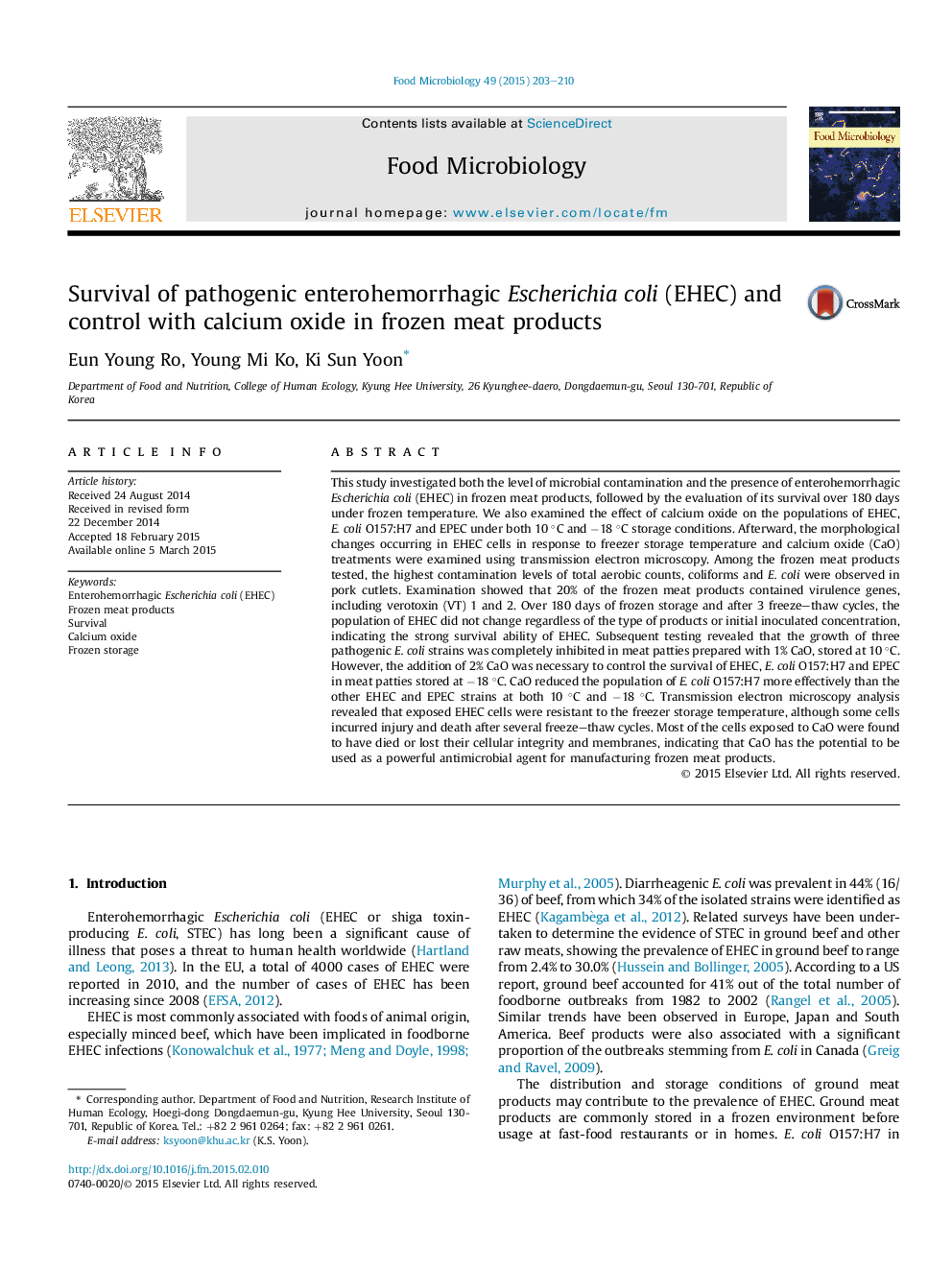| کد مقاله | کد نشریه | سال انتشار | مقاله انگلیسی | نسخه تمام متن |
|---|---|---|---|---|
| 4362749 | 1616251 | 2015 | 8 صفحه PDF | دانلود رایگان |

• Control of EHEC survival is more difficult at freezer than refrigerator temperature.
• Pathogenic Escherichia coli is very resistant under frozen storage and freeze–thaw cycles.
• Addition of 2% CaO to meat patties could reduce the risk of pathogenic E. coli.
• E. coli O157:H7 is more sensitive to CaO treatment than other pathogenic E. coli.
This study investigated both the level of microbial contamination and the presence of enterohemorrhagic Escherichia coli (EHEC) in frozen meat products, followed by the evaluation of its survival over 180 days under frozen temperature. We also examined the effect of calcium oxide on the populations of EHEC, E. coli O157:H7 and EPEC under both 10 °C and −18 °C storage conditions. Afterward, the morphological changes occurring in EHEC cells in response to freezer storage temperature and calcium oxide (CaO) treatments were examined using transmission electron microscopy. Among the frozen meat products tested, the highest contamination levels of total aerobic counts, coliforms and E. coli were observed in pork cutlets. Examination showed that 20% of the frozen meat products contained virulence genes, including verotoxin (VT) 1 and 2. Over 180 days of frozen storage and after 3 freeze–thaw cycles, the population of EHEC did not change regardless of the type of products or initial inoculated concentration, indicating the strong survival ability of EHEC. Subsequent testing revealed that the growth of three pathogenic E. coli strains was completely inhibited in meat patties prepared with 1% CaO, stored at 10 °C. However, the addition of 2% CaO was necessary to control the survival of EHEC, E. coli O157:H7 and EPEC in meat patties stored at −18 °C. CaO reduced the population of E. coli O157:H7 more effectively than the other EHEC and EPEC strains at both 10 °C and −18 °C. Transmission electron microscopy analysis revealed that exposed EHEC cells were resistant to the freezer storage temperature, although some cells incurred injury and death after several freeze–thaw cycles. Most of the cells exposed to CaO were found to have died or lost their cellular integrity and membranes, indicating that CaO has the potential to be used as a powerful antimicrobial agent for manufacturing frozen meat products.
Journal: Food Microbiology - Volume 49, August 2015, Pages 203–210